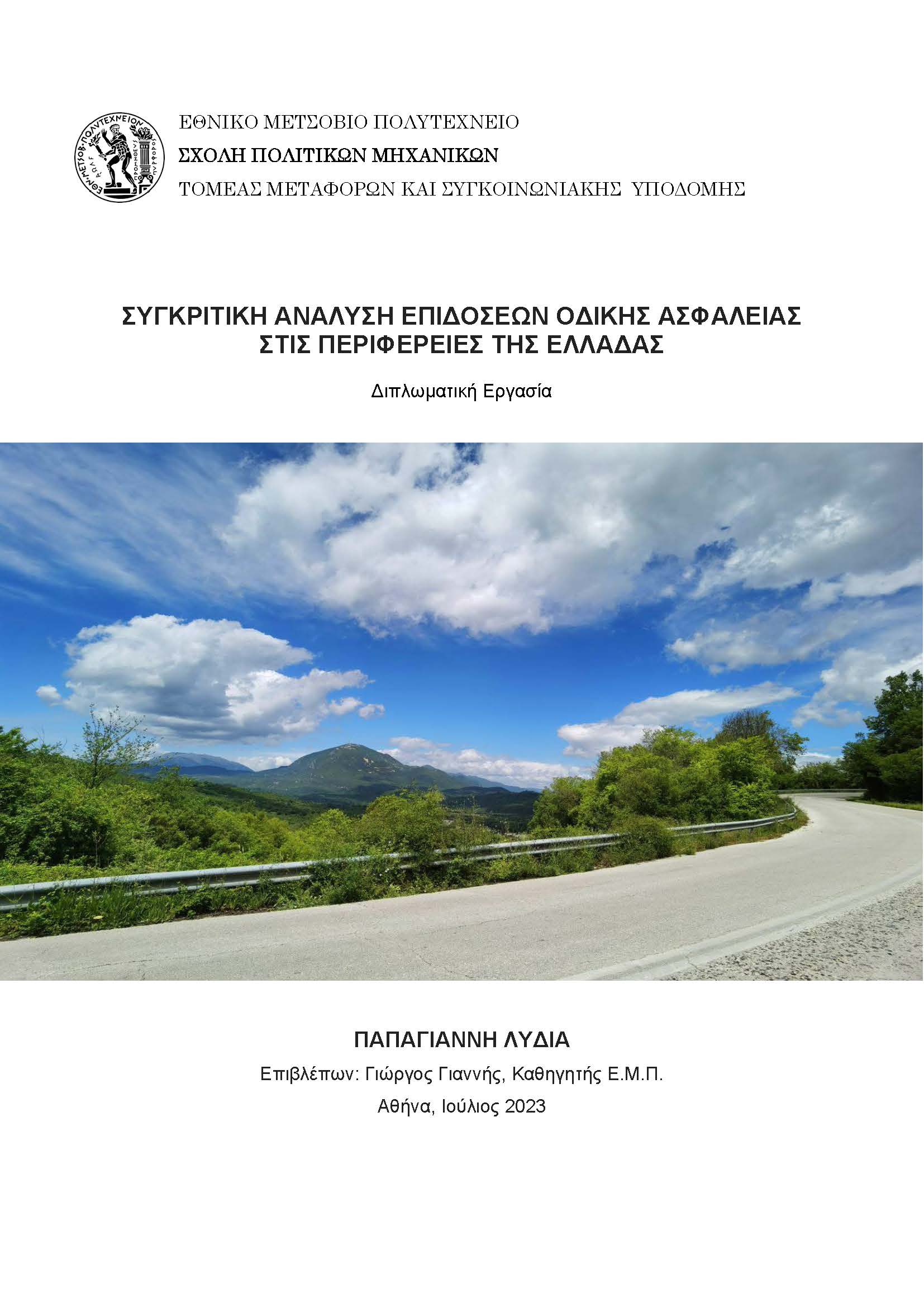
The aim of this Diploma Thesis is to analyse and compare the performance of road safety among the Regions of Greece. For this purpose, Key Performance Indicators (KPIs) for road safety in Greece were collected and calculated for the year 2022 as part of the European Union’s Baseline project. Additionally, data on basic socio-economic characteristics of the Regions for the period 2016-2020 were gathered, and linear regression models were developed to analyze them. From the model that was developed, it was found that the number of road fatalities per hundred thousand inhabitants depends on the KPI for the use of protective equipment, the KPI for distraction from handheld devices, the KPI for compliance with speed limits, the per capita GDP, the number of hospital beds, and the employment rate. Furthermore, it was found that as the KPI for the use of protective equipment, the KPI for distraction from handheld devices, the KPI for compliance with speed limits, the per capita GDP, and the number of hospital beds increase, the number of road fatalities per population decreases. Conversely, as the employment rate increases, the road fatalities also increase. Additionally, a ranking of the Regions performance in road safety (expect the Region of Attica) was conducted using the Data Envelopment Analysis (DEA) method, which resulted in the Central Macedonia and South Aegean regions having better road safety performance, while according to this classification the Regions of Peloponnese and Central Greece regions ranked lower in the ranking of road safety performance.
| ID | ad142 |
| Presentation | |
| Full Text | |
| Tags |







